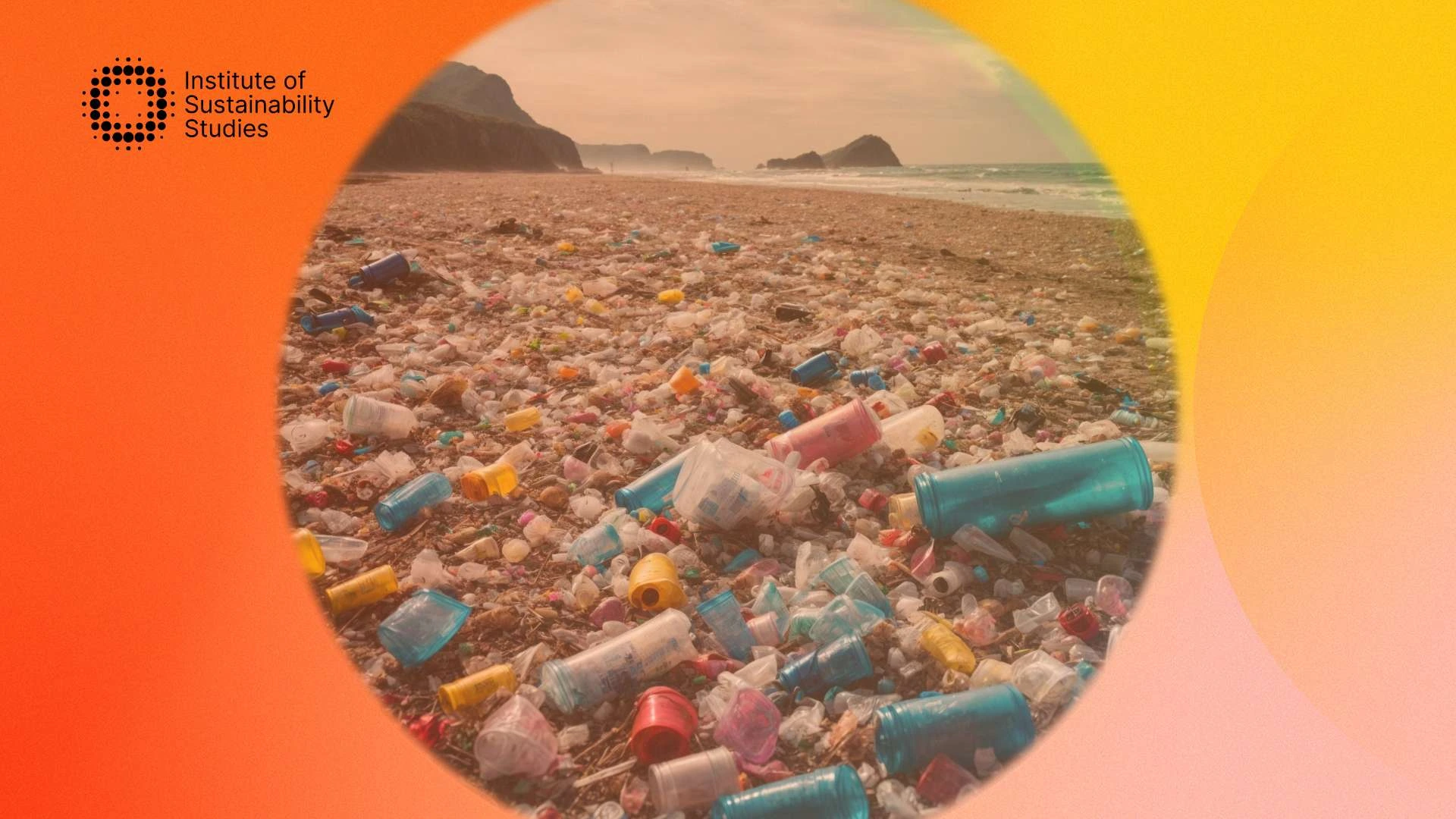Marine life conservation is crucial for maintaining the health of our oceans, supporting global biodiversity, and ensuring the sustainability of human livelihoods. For instance, the UN reports that our oceans generate 50 percent of the oxygen we need to survive.
However, tourism, particularly in coastal and marine areas, presents significant challenges to marine life. Below, we explore the common negative impacts of tourism on marine environments and highlight how business sustainability within the sector can aid marine life conservation.
What is marine life conservation?
Marine life conservation involves the protection and preservation of ecosystems in oceans and seas. This practice encompasses various efforts to safeguard marine species and habitats from overexploitation, pollution, and other threats.
Key components of marine life conservation include the protection of marine species, habitat preservation, pollution control, and sustainable practices such as responsible tourism, sustainable fishing, and aquaculture. Effective marine life conservation is critical for maintaining ocean health, which in turn supports global biodiversity, climate regulation, and human livelihoods.
Common negative impacts of tourism on marine environments
Tourism, particularly in coastal and marine areas, can have significant impacts on marine environments. These impacts can be broadly categorised into environmental, ecological, and socio-economic effects.
Environmental impacts
- Plastic waste: Tourists often generate large amounts of waste, particularly plastic, which can end up in the ocean, harming marine life.
- Sewage and wastewater: Inadequate sewage treatment facilities in tourist areas can lead to the discharge of untreated wastewater into the sea, causing eutrophication and harmful algal blooms.
- Chemical pollution: Sunscreens and other personal care products can contain chemicals that are toxic to marine organisms, particularly coral reefs.
- Coastal development: The construction of hotels, resorts, and other infrastructure can lead to the destruction of critical habitats such as mangroves, wetlands, and coral reefs.
- Beach erosion: Increased foot traffic and construction can accelerate beach erosion, altering natural landscapes and habitats.
- Sedimentation: Construction and land-clearing activities can increase sediment runoff into the ocean, smothering coral reefs and seagrass beds.
- Oil and Fuel Spills: Recreational boating and marine transport can lead to oil and fuel spills, which are detrimental to marine ecosystems.
Ecological impacts
- Noise pollution: Boat engines, jet skis, and other recreational activities can create noise that disturbs marine animals, particularly mammals such as whales and dolphins.
- Physical disturbance: Tourists swimming, snorkelling, and diving can disturb or damage fragile marine organisms and their habitats.
- Increased demand for seafood: Tourism can increase the demand for local seafood, leading to overfishing and depletion of fish stocks.
- Collection of marine life: Tourists sometimes collect shells, corals, and other marine organisms as souvenirs, which can deplete local populations and disrupt ecosystems.
- Ballast water: Ships and yachts can introduce invasive species through ballast water discharge, which can outcompete native species and alter marine ecosystems.
Socio-economic impacts
- Over-reliance on tourism: Local economies can become overly dependent on tourism, making them vulnerable to fluctuations in tourist numbers and global economic conditions.
- Loss of traditional practices: The influx of tourists can lead to the erosion of local cultures and traditions, including traditional fishing practices that are more sustainable.
- Land and resource conflicts: Development for tourism can displace local communities and restrict their access to traditional fishing and living areas.
How responsible tourism can enhance marine conservation
Sustainable travel can significantly enhance marine life conservation through various practices that mitigate negative impacts and promote eco-friendly interactions with marine environments. Below are some key ways in which responsible tourism contributes to the conservation of marine life.
Eco-friendly accommodations and tours
Support accommodations and tour operators that implement sustainable practices such as waste reduction, energy conservation, and use of eco-friendly products.
Encourage tourists to choose operators that have certifications or follow guidelines for sustainable travel.
Minimising pollution
Advocate for the reduction of plastic use and proper waste management to prevent littering and marine pollution.
Promote the use of biodegradable sunscreens and personal care products to protect coral reefs and other marine life.
Funding and resources
Allocate a portion of tourism revenue to fund marine conservation projects, research, and protected areas.
Provide financial and logistical support for local conservation initiatives and organisations.
Volunteer programmes
Encourage tourists to participate in volunteer programmes that focus on marine conservation, such as beach clean-ups, coral reef restoration, and wildlife monitoring.
Foster partnerships between tourism operators and conservation groups to create opportunities for tourists to contribute to conservation efforts.
Raising awareness
Educate tourists about the importance of marine ecosystems and the threats they face, such as overfishing, pollution, and climate change.
Provide information on responsible behaviours that tourists can adopt to minimise their impact on marine environments.
Marine Protected Areas (MPAs)
Support the creation and maintenance of MPAs where tourism activities are regulated to ensure the protection of critical habitats and species.
Promote responsible tourism practices within MPAs to balance conservation goals with sustainable tourism opportunities.
Challenges with marine conservation and responsible tourism
Below are some of the primary challenges that arise when adopting responsible tourism initiatives.
Short-term gains vs long-term sustainability
Tourism operators and local communities may prioritise immediate economic benefits over long-term sustainability, leading to overexploitation of resources.
Funding and investment
Securing consistent funding for sustainable practices and conservation projects can be challenging, particularly in developing regions.
Compliance
Ensuring that all stakeholders, including tourists, businesses, and local authorities, comply with sustainability guidelines can be difficult.
Tourist education
Raising awareness and educating tourists about responsible behaviours and the importance of conservation is an ongoing challenge.
Local knowledge
Local communities and tourism operators may lack the knowledge or resources to implement sustainable practices effectively.
Infrastructure development
Developing the necessary infrastructure to support tourism while preserving natural habitats is a complex balancing act.
Carrying capacity
Managing the number of tourists to avoid exceeding the carrying capacity of fragile ecosystems requires careful planning and enforcement.
Conclusion
While tourism can pose significant threats to marine environments through pollution, habitat destruction, and overfishing, it also holds the potential to support marine life conservation when managed responsibly.
Eco-friendly accommodations, pollution minimisation, funding for conservation projects, and educational initiatives can mitigate the negative impacts of tourism. By implementing these initiatives, we can harness the positive potential of tourism to protect and preserve marine ecosystems for future generations.
Armed with a Postgraduate Degree in Design Thinking for Sustainability from University College Dublin, Richie stands out as an innovative problem-solver with a flair for interpersonal communication.
His commitment to promoting sustainability through education has made him keen to guide both individuals and organisations on their learning journeys towards sustainability. Having honed exceptional interpersonal skills during his tenure in the hospitality industry, Richie now applies these skills in the corporate realm, offering effective guidance to past, current, and potential participants on their educational path.
- Richie Denieffehttps://instituteofsustainabilitystudies.com/insights/author/richie/
- Richie Denieffehttps://instituteofsustainabilitystudies.com/insights/author/richie/
- Richie Denieffehttps://instituteofsustainabilitystudies.com/insights/author/richie/









